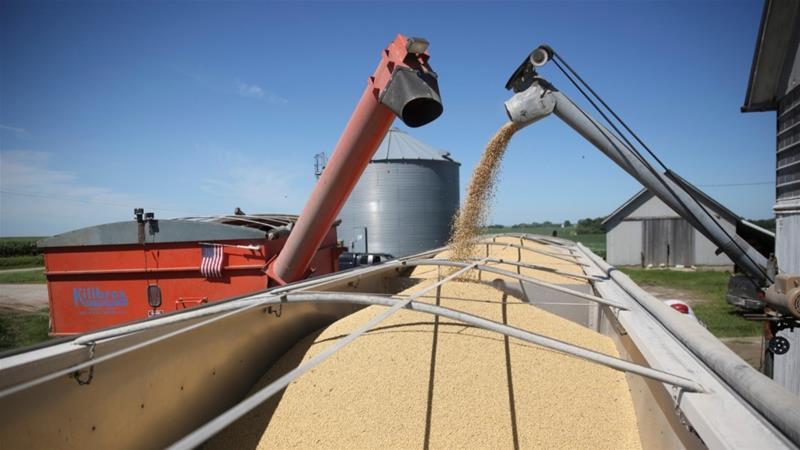Across snow-covered North Dakota, farmers are stuck with fields full of weather-damaged corn – a crop they planted after the United States-China trade war killed their soybean market. Many of them do not know yet what crops they will plant next season among a host of dicey options.
In Texas, Kansas and Colorado, farmers are weighing whether they should plant fewer acres of corn and more sorghum, even though China has all but stopped buying it. That is because sorghum – a grain crop – costs about half as much as corn to plant, which appeals to farmers wary of investing too much for an uncertain return.
More:
As the US farm economy reels from the worst harvest in decades after nearly two years of the trade war, US grain growers are struggling to decide what crops might keep them in business.
US President Donald Trump announced last month that China had agreed to double its pre-trade war purchases of US agricultural products over the next two years as part of a Phase 1 trade deal. That brought little comfort to US farmers because China still has not confirmed the commitment or signed any deal.
“President Trump said that we’re all going to need to go buy bigger tractors,” said North Dakota farmer Justin Sherlock. “I don’t think many farmers are going to invest much money until we see that this is a done deal and a long-term deal.”
Trump administration officials say the Phase 1 trade deal with China will be signed in January, though many tariffs will remain in place during further negotiation. Commodity market analysts and agricultural economists warn an agreement will not be an immediate fix for the US farm economy because the conflict has spurred China to develop new supply chains.
China has, for instance, deepened ties with rival exporters such as Brazil and Argentina. Brazilian soy cultivation is expanding after record exports to China in the past year and China is investing in South American ports.
Making matters worse, China’s need for soy and sorghum to feed livestock is waning because of a deadly pig disease that experts estimate has killed off about half the world’s largest hog herd. China’s hog industry has also worked to reformulate pig rations to include less soy and more alternative feeds that do not have to be imported from the US.
No return?
“We won’t go immediately back to where we were 18 months ago – maybe not for a long time,” Jay Debertin, chief executive officer of CHS Inc, the largest US farmer cooperative, told grain producers at a recent conference in North Dakota.
Many US farmers have tried shifting crops to dodge the economic fallout from losing such a crucial export market. They planted 76.5 million acres (31 million hectares) of soybeans in 2019, 14.3 percent fewer than the previous year, according to the latest US Department of Agriculture (USDA) data.
US plantings of sorghum – used in livestock feed and the fiery Chinese liquor baijiu – dipped about 7.5 percent in 2019, to 5.3 million acres (2.1 million hectares). Plantings of cotton have dropped, too, as China pulled back on purchases.
Plantings of such China-dependent crops likely would have fallen much further were it not for the Trump administration’s allocation of $24.5bn in aid to compensate farmers for trade-war losses. The bailouts gave many farmers an incentive to keep planting crops such as soybeans that they knew would be difficult to sell at any profitable price. Government handouts are expected to account for nearly a third of 2019 net farm income, according to the federal government and bank regulatory data.
Trump administration officials have not said if farmers will get more payments in 2020. Robert Johansson, the chief economist at USDA, told Reuters news agency he expected the interim trade deal would solve the issues that the aid programme had addressed.
USDA Deputy Press Secretary Alec Varsamis said the agency would decide in January on future payments. White House spokesman Judd Deere declined to comment and referred to previous statements by US Trade Representative Robert Lighthizer, who has said China committed to “massive” US agriculture purchases.
Farmers in export-dependent regions say they cannot continue to sell their crops for below the cost of production without a third round of subsidies to cover the losses.
“If the government doesn’t pay us, we’re done,” said Sherlock, who did not vote for Trump in 2016 and remains undecided for 2020.
Most farmers have backed the president as he seeks re-election, according to polls by Reuters and farm media outlets. In 2016, they were drawn to Trump’s promise to shake up Washington bureaucracy and hoped the trade war, although it might bring short-term losses, would eventually improve the size and scope of China’s US agricultural purchases.
SOURCE: aljazeera.com






























